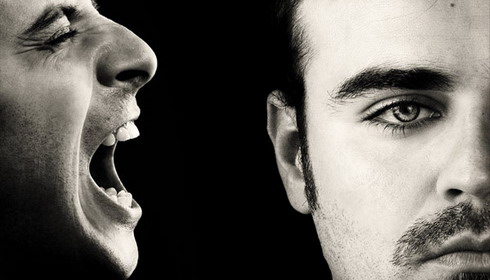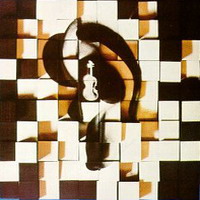In: Lyrics
MORE ON “EAR”

Murat points out that there is a kind of “ear” that is essentially a-sonic, a mental space of imagined sound, perhaps, for which certain poets have a distinctive knack. I would quote Murat directly, but I’ve just lost access to my saved e-mail (hopefully temporarily), so I hope he will forgive me if this is a misstatement. It seems to me that the effect in question is closely related to what Pound meant by logopoeia—the (almost tactile) play of language on the reader’s intellect. This, actually, is the topic I had wanted to explore in my first blogpost, but I ran out of steam before I could get there.
 Murat suggests (again, I’m paraphrasing from memory) that because this category of “ear” is virtual rather than materially sensual, it is less subject to “objective” evaluation, or to positive demonstration of any kind: its success or failure inheres in the poet’s judgment and intuition, which results often in wildly unstable textual conditions. I am in basic sympathy with this concept, but I do want to ask at what point it becomes impossible to speak of it any longer in terms of “ear,” when it passes over completely into the zone of abstract intellectual apprehension. As long as it remains possible to apply the aural metaphor, I would suggest, at least some of the same criteria for gauging the poet’s “ear” in the more traditional sense must still apply. That is, one must still be able to invoke concepts such as alliteration, assonance, rhyme, mellifluity, etc. in discussing the poetic registers tapped into by the text. The work of Ray Di Palma is a useful example here. Here is a passage from Metropolitan Corridor (1992):
Murat suggests (again, I’m paraphrasing from memory) that because this category of “ear” is virtual rather than materially sensual, it is less subject to “objective” evaluation, or to positive demonstration of any kind: its success or failure inheres in the poet’s judgment and intuition, which results often in wildly unstable textual conditions. I am in basic sympathy with this concept, but I do want to ask at what point it becomes impossible to speak of it any longer in terms of “ear,” when it passes over completely into the zone of abstract intellectual apprehension. As long as it remains possible to apply the aural metaphor, I would suggest, at least some of the same criteria for gauging the poet’s “ear” in the more traditional sense must still apply. That is, one must still be able to invoke concepts such as alliteration, assonance, rhyme, mellifluity, etc. in discussing the poetic registers tapped into by the text. The work of Ray Di Palma is a useful example here. Here is a passage from Metropolitan Corridor (1992):
Har hear a gander
Harrar and the ram
bowedHar har
the sodium blowedHang there
hear the harHave a gander
hard bonedCorpus two yards
of lardHear har a gander
One might argue that this is a primarily sonic text—that it is a poem of sound before sense. But it is disjunctive as much by virtue of the expectations of sonic closure it encourages—and then defeats—as by virtue of its semantic opacity. It looks like sound, but does it really sound like sound? Or even if it does, is that really the point? The word “hear” is insistent throughout, as is its diminished semi-homonym “har-.” The poem, in fact, appears to direct its reader to do just this, to hear. But this appearance is superficial, for it depends on a visual apprehension of phonemes, of their artful suspension in unpunctuated space, of their graphic connectedness more than any actual intonation. Vocal recitation is bound to disappoint in comparison to the delicate resonances conjured by a silent reading.
 So what kind of ear are we talking about here? A kind of closet elocution, on the model of closet drama?
So what kind of ear are we talking about here? A kind of closet elocution, on the model of closet drama?
Nada raises equally (more?) difficult questions: “What constitutes a good ear? Lots of assonance and alliteration? Mellifluity? A ‘restrained’ sense of measure? An original sense of measure? Adherence to traditional measures? A connection to poetry as song? Memorability? Does someone who writes from a melopoeic source always have a better ear than someone who is more logopoeically oriented?”
This last question is crucial, as it points up the potential for circularity continually risked by this entire topic. Does someone who has a good ear always have the best “ear”?